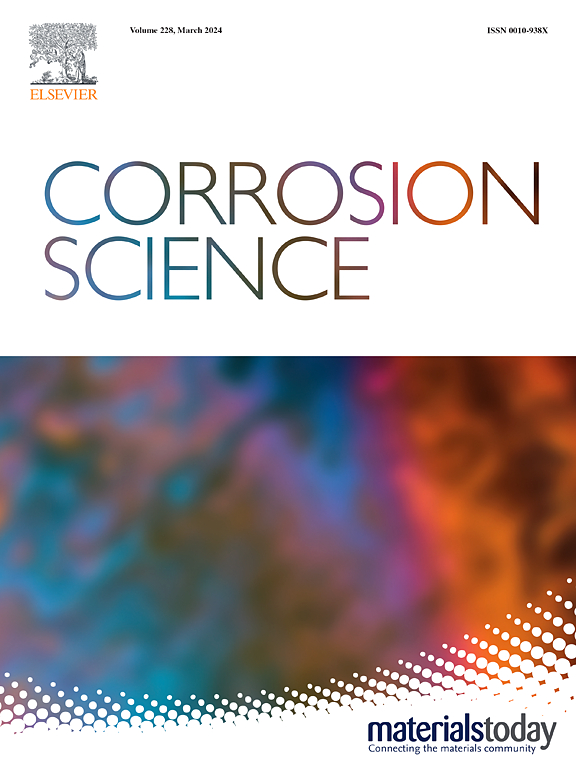Investigation of the corrosion-wear failure mechanism of multilayer Cr/GLC coatings under hydrostatic pressure-tribocorrosion alternation
IF 7.4
1区 材料科学
Q1 MATERIALS SCIENCE, MULTIDISCIPLINARY
引用次数: 0
Abstract
Graphite-like carbon (GLC) coating is a candidate protection coating for corrosion-wear resistance of materials surface in deep-sea environments. The mechanics-electrochemistry coupling failure mechanism and the corrosion-wear interaction failure of coatings have been an urgent problem that needs to be solved. In this paper, the corrosion-wear failure behaviour of multilayer Cr/GLC coating during static corrosion-tribocorrosion alternating cycles at 0.1 MPa and 15 MPa was investigated by electrochemical impedance spectroscopy (EIS), polarization curves and scanning electron microscope (SEM). The results show that the corrosion-wear morphology of multilayer Cr/GLC coating under high pressure and tribocorrosion coupling is more severe than that at atmospheric pressure, and the coating's corrosion resistance and wear resistance significantly decreased. High hydrostatic pressure amplifies the corrosive effect in the corrosion-wear interaction, accelerating purely mechanical wear and corrosion-accelerated wear processes of coatings. The action mechanism of complex mechanics and complex electrochemistry on the corrosion-wear failure of multilayer Cr/GLC coating is discussed.
静水压力-摩擦腐蚀交替作用下多层 Cr/GLC 涂层的腐蚀-磨损失效机理研究
类石墨碳(GLC)涂层是深海环境中材料表面抗腐蚀磨损的候选保护涂层。涂层的力学-电化学耦合失效机理和腐蚀-磨损相互作用失效一直是亟待解决的问题。本文通过电化学阻抗谱(EIS)、极化曲线和扫描电子显微镜(SEM)研究了多层 Cr/GLC 涂层在 0.1 MPa 和 15 MPa 静态腐蚀-三重腐蚀交替循环过程中的腐蚀-磨损失效行为。结果表明,多层铬/GLC 涂层在高压和摩擦磨损耦合作用下的腐蚀磨损形貌比常压下更为严重,涂层的耐蚀性和耐磨性明显下降。高静水压放大了腐蚀-磨损相互作用中的腐蚀效应,加速了涂层的纯机械磨损和腐蚀加速磨损过程。探讨了复杂力学和复杂电化学对多层铬/GLC 涂层腐蚀-磨损失效的作用机理。
本文章由计算机程序翻译,如有差异,请以英文原文为准。
求助全文
约1分钟内获得全文
求助全文
来源期刊

Corrosion Science
工程技术-材料科学:综合
CiteScore
13.60
自引率
18.10%
发文量
763
审稿时长
46 days
期刊介绍:
Corrosion occurrence and its practical control encompass a vast array of scientific knowledge. Corrosion Science endeavors to serve as the conduit for the exchange of ideas, developments, and research across all facets of this field, encompassing both metallic and non-metallic corrosion. The scope of this international journal is broad and inclusive. Published papers span from highly theoretical inquiries to essentially practical applications, covering diverse areas such as high-temperature oxidation, passivity, anodic oxidation, biochemical corrosion, stress corrosion cracking, and corrosion control mechanisms and methodologies.
This journal publishes original papers and critical reviews across the spectrum of pure and applied corrosion, material degradation, and surface science and engineering. It serves as a crucial link connecting metallurgists, materials scientists, and researchers investigating corrosion and degradation phenomena. Join us in advancing knowledge and understanding in the vital field of corrosion science.
 求助内容:
求助内容: 应助结果提醒方式:
应助结果提醒方式:


